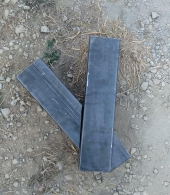Hey stove makers, how’s that title for click bate?
As I try to build better diy stoves I look around the internet for inspiration and I see many rocket cook stoves that have missed basics (like an insulated burn chamber) or are built out of materials that will be short lived (such as metal burn chambers). I’ve built a few of these stoves and they do work but are short lived and/or probably not nearly as efficient as the ones originally designed and tested by Larry Winiarski.
So I’ve been working on a design tool to get better results. I wanted an assessment tool that would quickly give me an idea of how well a stove works without lighting it and ideally before I even build it.
There are several rapid assessment tools that are used in health care. These help to give a standardized and rather objective score to what would otherwise be a lot of subjective findings. The Glasgow Coma Scale (GCS) is probably the most common of these. It scores a patient’s level of consciousness on a standardized set of criteria. If you’re posting on premies, you’re a 15/15. But if you’ve fallen off a Wofati and hit your head your score might be much lower. Research has correlated GCS scores to patient outcomes. A GCS score of 8 or less and your chances of survival drop.
I’m from Ottawa so I’ll call this the“Ottawa Rocket Stove Scale”. It is for rocket cook stoves. Instead of a numeric score, each stove gets a letter grade like in school, so it’s easy to understand. It takes about a minute to score a stove.
Each stove gets points for following Larry Winiarski’s basic principles of rocket stoves. If you’re not familiar with them, you should check them out.
http://www.bioenergylists.org/stovesdoc/Still/Rocket%20Stove/Principles.html There is much more to a rocket stove than an “L” tube!
Then you subtract points for using materials that are not durable (ie portland cement) or sustainable (ie expensive). Lastly you convert your number value to letter grade for your stove.
I find it pretty easy to use but then again I created it so tell me what you think. The letter grade might seem like an extra step but it makes a lot more sense than saying that your stove is a “3” since most folks are familiar with letter grades anyway.
To give you an example of a Grade A stove, look at this stove from Approvecho:
So far I’ve figured out that my best stoves are in the “D” range. So now I can “Fail better” in my designs and easily see how to score more points which translates to a better stove.
I’ve found this useful so far but am wondering if any of the rocket gurus on premies have any feedback? Does it seem accurate to you? Let me know if you find it useful or think that it needs tweaking.
-Ottawa Tinkerer









